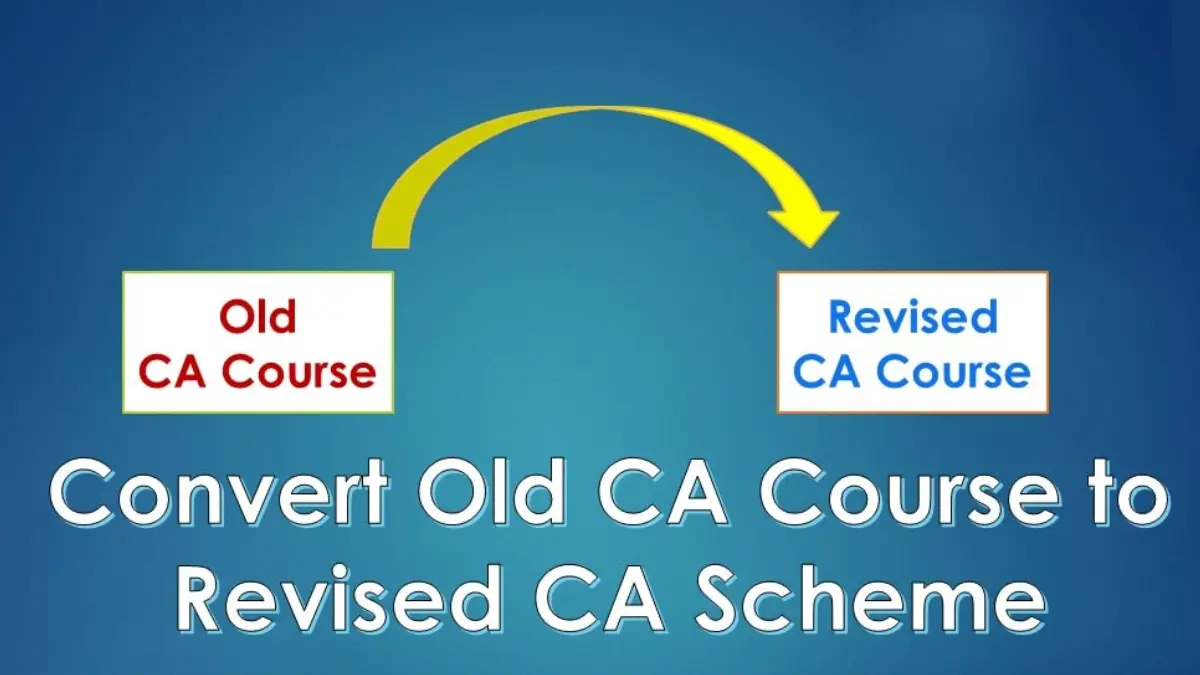Aspiring Chartered Accountants (CAs) need a thorough understanding of absorption costing, a vital concept in managerial accounting. This comprehensive guide explains the definition and significance of absorption costing, how it allocates both variable and fixed costs to products and why it is crucial for CA students to grasp this concept.
What is Absorption Costing?
Absorption costing is a costing method that allocates all manufacturing costs to products. It is also known as full costing. It includes direct materials, direct labor, and both variable and fixed overhead costs. By incorporating all production expenses, It provides a comprehensive view of product costs, aiding businesses in making informed decisions.
Importance of Absorption Costing in Managerial Accounting
It holds significant importance in managerial accounting due to the following reasons:
- Accurate Cost Allocation: By considering all manufacturing costs, it presents a more accurate picture of the cost of producing goods.
- Financial Reporting Compliance: Absorption costing adheres to generally accepted accounting principles (GAAP) and international financial reporting standards (IFRS), making it the preferred method for external financial reporting.
- Pricing Decisions: The comprehensive view of product costs aids in setting appropriate selling prices that cover both variable and fixed expenses, ensuring profitability.
- Profit Determination: It assists in determining the actual profitability of products, as it includes all costs related to production.
Types of Absorption Costing
Full Cost Absorption
Full cost absorption entails including all production costs in the product’s cost. These costs consist of direct materials, direct labor, variable overhead, and fixed overhead. This method provides a holistic approach to costing but can have some drawbacks. Full cost absorption includes direct materials, direct labor, variable overhead, and fixed overhead in the product cost.
Advantages and disadvantages of full cost absorption
Advantages
- Comprehensive cost representation for accurate pricing decisions.
- Adheres to financial reporting standards for transparency.
Disadvantages:
- Arbitrary allocation of fixed overhead may distort product costs.
- Not suitable for decision-making with fluctuating production volumes.
Variable Cost Absorption
Variable cost absorption considers only the variable production costs, such as direct materials, direct labor, and variable overhead. It focuses solely on variable production costs. Fixed overhead costs are not included in the product’s cost under this method.
When and why this method might be preferred
Variable cost absorption is preferred when fixed costs are treated as period costs, not directly allocated to products.
Comparison with full cost absorption
While full cost absorption provides a comprehensive view of product costs, variable cost absorption focuses on variable expenses, providing insights into short-term cost fluctuations.
Methods of Absorption Costing
Traditional Absorption Costing
The traditional method allocates fixed overhead using predetermined overhead rates based on estimated activity levels. Here’s a step-by-step example illustrating the process:
Activity-Based Costing (ABC)
ABC is an alternative approach to traditional absorption costing. It allocates costs based on the activities that drive overhead expenses, providing a more accurate product cost determination.
How ABC differs from traditional absorption costing
- Unlike traditional absorption costing, ABC identifies multiple cost drivers for different activities, leading to more refined cost allocations.
- ABC’s focus on activity drivers results in a more precise distribution of costs, leading to better product cost estimations.
How to Calculate Absorption Costing
To calculate an absorption costing for a product, follow these steps:
- Sum the direct materials and direct labour costs to obtain the total variable production cost.
- Add the variable overhead cost to the total variable production cost.
- Determine the fixed overhead cost for the given period.
- Allocate the fixed overhead cost to the product using an appropriate allocation basis, such as units produced or machine hours.
The formula of Absorption Costing
The formula for absorption costing is:
Total Product Cost = Direct Materials + Direct Labor + Variable Overhead + Fixed Overhead
Example of Using the Formula to Calculate Product Cost
Let’s consider a product with direct materials cost of $50, direct labor cost of $30, variable overhead cost of $20, and fixed overhead cost of $40.
Using the absorption costing formula:
Total Product Cost = $50 + $30 + $20 + $40 = $140
Advantages and Disadvantages of Absorption Costing
Advantages
- Accurate Product Cost: Absorption costing provides a comprehensive view of product costs, ensuring more accurate pricing decisions and profitability assessments.
- Financial Reporting Compliance: As it includes all production costs, it aligns well with financial reporting requirements, promoting transparency and adherence to accounting standards.
- Better Decision-Making: By considering both variable and fixed costs, it aids in making informed decisions about product lines, pricing, and resource allocation.
Disadvantages
- Fixed Overhead Allocation: Arbitrary allocation of fixed overhead costs can lead to distorted product costs, affecting decision-making accuracy.
- Impact of Volume Fluctuations: It may not accurately reflect the impact of production volume changes on product costs, potentially leading to incorrect conclusions.
Uses of Absorption Costing
- Inventory Valuation: It is used to value inventory for financial reporting purposes, ensuring that all production costs are accounted for.
- Financial Reporting: External financial reports are prepared using it to comply with accounting standards.
- Decision-Making: Businesses use absorption costing data to make strategic decisions regarding pricing, product mix, and resource allocation.
Examples of Absorption Costing
Real-world examples of absorption costing in different industries demonstrate how businesses use this method to determine product costs accurately. This type of costing is valuable for businesses. Hence, people involved in finance and accounting need to understand its concept in an effective manner. Below we have mentioned numerical and industry-based examples, you can take a brief idea from that.
Numerical Examples
Example 1: Let’s consider a company that manufactures electronic gadgets. For a production run of 1,000 gadgets, the costs are as follows:
- Direct materials cost: Rs. 50,000
- Direct labor cost: Rs. 30,000
- Variable overhead cost: Rs. 20,000
- Fixed overhead cost: Rs. 40,000
Using the absorption costing formula:
Total Product Cost = Direct Materials + Direct Labor + Variable Overhead + Fixed Overhead Total Product Cost = Rs. 50,000 + Rs. 30,000 + Rs. 20,000 + Rs. 40,000 = Rs. 140,000
Example 2: Now, let’s consider another company that produces apparel. For a production run of 500 units of clothing, the costs are as follows:
- Direct materials cost: Rs. 25,000
- Direct labor cost: Rs. 15,000
- Variable overhead cost: Rs. 10,000
- Fixed overhead cost: Rs. 30,000
Using the absorption costing formula:
Total Product Cost = Direct Materials + Direct Labor + Variable Overhead + Fixed Overhead Total Product Cost = Rs. 25,000 + Rs. 15,000 + Rs. 10,000 + Rs. 30,000 = Rs. 80,000
Example 3: Consider a pharmaceutical company that manufactures medications. For a production batch of 2,000 units, the costs are as follows:
- Direct materials cost: Rs. 40,000
- Direct labour cost: Rs. 20,000
- Variable overhead cost: Rs. 15,000
- Fixed overhead cost: Rs. 50,000
Using the absorption costing formula:
Total Product Cost = Direct Materials + Direct Labor + Variable Overhead + Fixed Overhead Total Product Cost = Rs. 40,000 + Rs. 20,000 + Rs. 15,000 + Rs. 50,000 = Rs. 125,000
Examples in Different Industries:
Manufacturing Industry
A manufacturing company produces various products, such as smartphones, tablets, and laptops. To determine the cost of each product accurately, absorption costing is used. The direct materials, direct labor, and variable and fixed overhead costs are allocated to each unit of production. This helps the company set competitive selling prices and identify the most profitable product lines.
Automobile Industry
In the automobile industry, it is utilized to calculate the total cost of manufacturing vehicles. This includes the costs of raw materials, labor, and both variable and fixed overhead expenses. It enables automobile manufacturers to understand the true cost of production, identify cost-saving opportunities, and make strategic decisions regarding pricing and product offerings.
Food and Beverage Industry
Food and beverage manufacturers use it to determine the cost of producing various products, such as snacks, beverages, and packaged foods. The costs of ingredients, labour, and manufacturing overhead, including rent, utilities, and equipment depreciation, are allocated to each unit produced. This allows the company to establish competitive prices while ensuring profitability.
Pharmaceutical Industry
Pharmaceutical companies utilize it to calculate the cost of producing medications and drugs. The direct costs of active ingredients, packaging materials, labour, and both variable and fixed overhead costs are accounted for. Accurate product costing is essential in the pharmaceutical industry to comply with regulatory requirements and make informed pricing decisions.
Apparel Industry
In the apparel industry, it is applied to determine the total cost of manufacturing clothing items. The costs of fabric, trims, labour, and both variable and fixed manufacturing expenses are allocated to each unit produced. This assists clothing manufacturers in setting competitive prices and optimizing their product mix.
Electronics Industry
Companies in the electronics industry use it to determine the cost of manufacturing electronic devices, such as televisions, cameras, and audio equipment. The direct costs of components, labour, and both variable and fixed overhead expenses are accounted for. This allows electronics manufacturers to assess product profitability and make informed decisions about product development and pricing.
Aerospace Industry
In the aerospace industry, it is applied to calculate the cost of manufacturing aircraft and spacecraft. The direct costs of materials, specialized components, labour, and both variable and fixed overhead costs are allocated to each unit produced. Accurate cost information is vital in the aerospace industry, where projects are complex and expensive.
Absorption Costing Income Statement
The absorption costing income statement distinguishes between variable and fixed costs, reflecting their impact on profitability. This statement is crucial for understanding the financial performance of products and the overall business.
Difference between Absorption and Marginal Costing
While both absorption and marginal costing are used to determine product costs, they differ in their treatment of fixed overhead costs.
- When each method is appropriate to use
It is more suitable for external reporting and pricing decisions, while marginal costing aids in short-term decision-making and cost-volume-profit analysis.
- How the treatment of fixed overhead differs in the two approaches
It includes fixed overhead in the product cost, whereas marginal costing treats fixed overhead as a period cost and does not allocate it to products.
Difference between Absorption and Variable Costing
Absorption costing and variable costing are two distinct methods used to determine product costs, and they treat fixed overhead costs differently.
- Clear Distinction between Absorption Costing and Variable Costing
It allocates both variable and fixed manufacturing costs to products, while variable costing includes only variable production costs in the product’s cost. This distinction arises due to the treatment of fixed overhead costs. - When Each Method is Appropriate to Use
It is more suitable for external financial reporting and pricing decisions, as it provides a comprehensive view of product costs by incorporating all manufacturing expenses. On the other hand, variable costing is valuable for short-term decision-making, cost-volume-profit analysis, and understanding the impact of changes in production volumes on profitability. - How the Treatment of Fixed Overhead Differs in the Two Approaches
In absorption costing, fixed overhead costs are allocated to products based on predetermined overhead rates, which can result in fluctuating product costs when production volumes change. In contrast, variable costing treats fixed overhead costs as period costs and does not allocate them to products. As a result, product costs under variable costing remain constant, regardless of the level of production.
Conclusion
At last, absorption costing is a fundamental concept for CA students to grasp, as it forms the basis for accurate financial reporting and aids businesses in making informed managerial decisions. Understanding the different methods and their implications on product costs and profitability is essential for excelling in the field of accounting. By mastering absorption costing, CA students can become proficient in cost management and contribute significantly to organizational success.
Frequently Asked Question
Q1. What is the process of absorption costing?
Ans. The process of absorption costing involves allocating all manufacturing costs, including direct materials, direct labor, variable overhead, and fixed overhead, to the individual units of a product or service. This is done to determine the full cost of production and calculate the selling price. It ensures that both variable and fixed overhead costs are absorbed into the final cost of each unit.
Q2. How can the use of absorption costing result in over production?
Ans. Absorption costing may incentivize overproduction as producing more units reduces the fixed overhead cost per unit, making each unit appear cheaper on financial statements.
Q3. Why do many companies use absorption costing?
Ans. Companies use absorption costing because it aligns with accounting standards, helps with cost allocation, inventory valuation, and taxation compliance.
Q4. What are possible examples of companies that uses absorption costing?
Ans. Companies that uses absorption costing are Ford, Apple, Pfizer, Nestle, Boeing, IKEA, Nike, and Dow Chemicals.










